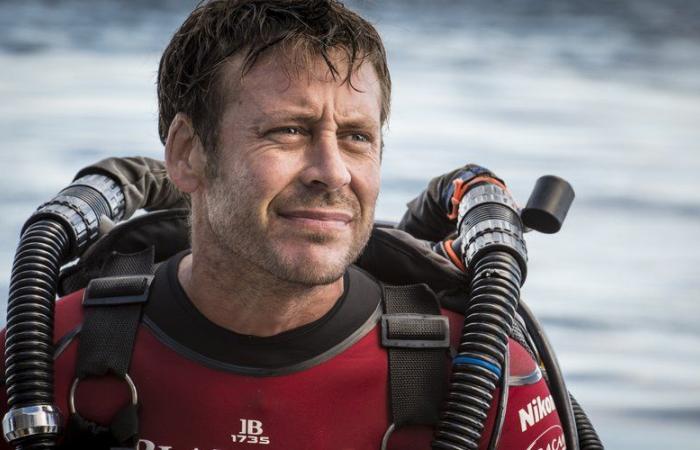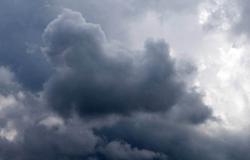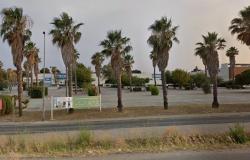
On the occasion of the closing of the 50th anniversary of the Cerbère-Banyuls Marine Nature Reserve, belonging to the Department, the professional diver, underwater photographer, biologist, scientific advisor in the program “Ushuaïa Nature” by Nicolas Hulot and author , Laurent Ballesta, hosts a conference entitled “The Mediterranean Seas” this Friday, November 22, 2024, at 6:30 p.m., at the Castillet cinema in Perpignan. The one who was awarded the prize for the most beautiful naturalist photo of the year, for the second time after 2021, by the Natural History Museum in London, will reveal all the originalities of this sea in which he has long diving, notably at Cerbère-Banyuls.
Laurent Ballesta, the naturalist and underwater photographer, biologist, explorer and documentarian that you are, is linked to the Cerbère-Banyuls Marine Nature Reserve.
As a child, I regularly dove near Banyuls in the reserve which is exactly my age, it dates back to 1974. As a student, I had the privilege of doing my entire end-of-study internship within the integral reserve. Later, the name of my company Andromeda Oceanology came from the name of the small fish the Andromeda Goby, my very first discovery in the heart of the Banyuls reserve, which no one had ever photographed. When Frédéric Cadène, curator of the Cerbère-Banyuls Marine Nature Reserve, asked me to conclude the anniversary year with my intervention, I was both very touched and a little uncomfortable, because it It had seriously been about ten years since I worked there as a naturalist. This place matters to me, because as a child I had my first emotions and my first vocations as a biologist when I saw the Arago laboratory.
This taste for the search for exoticism within the Mediterranean comes from the fact that I myself grew up in a very atypical area.
On the occasion of the closing of the 50th anniversary of the Reserve, you will host a conference on the theme “The Mediterranean seas.” Why specifically mention this plural? Depending on the geographical location, are the ecological balances fragile from one point to another in this sea?
This is not a spelling mistake and I will not change the nomenclature. The Mediterranean Sea is less a big sea than a small ocean with subdivisions, ridges, basins, peaks… It is not the North, China or Baltic Sea. This taste for the search for exoticism within the Mediterranean comes from the fact that I myself grew up in a very atypical area, the Gulf of Aigues-Mortes, where my vocation as a marine biologist was born, with lagoons, the Thau basin, the Camargue. It has nothing to do with the Côte d’Azur or elsewhere with the influence of the Rhône on ecosystems. The idea came to me to include Banyuls as one of the originalities of the Mediterranean. Instead of making the Mediterranean a whole and instead show its diversity. The strange things that we are not used to seeing: the underwater volcanic zones of the Aeolian Islands in Italy, the forests of large brown algae near Fréjus, the field of eighteen million nests of fish stuck together over more than 700 hectares… Even in the Mediterranean, we don’t know everything yet.
The more strictly we protect areas, the more the remaining areas are exploitable.
A showcase for the preservation of nature in the face of human activities and climate change, the Cerbère-Banyuls Marine Nature Reserve is indeed a precious asset?
It’s a real success. I’m surprised by the changes, more so than when you come there often. As a kid, when I dove in the authorized areas of the Reserve, it was pretty. But there was no more fish inside the Reserve than at Cap Béar where underwater hunting and fishing were intense. Later, I was able to dive in the Strict Reserve. I could clearly see the difference in richness in quantity of fish, size, rare species. Today, all of this is in the Normal Reserve. In two decades, we see that the Integral Reserve has overflowed, it’s magnificent. Some people think that if we protect everything, we can’t go anywhere. But it’s the opposite. The more strictly we protect areas, the more exploitable the remaining areas are. The Strict Reserve sows the resource elsewhere which is exploitable. It is not for nothing that the Reserve is a success, that there are plans to expand it and that humanly and socially, it works.
You carried out the first scientific protocols on the coelacanth, nicknamed the living fossil. At the Cerbère-Banyuls Reserve, the totem animal is the grouper. Could it have inspired you for a subject of study?
Yes, why not. It was only this summer that there were the first grouper recruitments. We knew that there was some reproduction, but you should know that around thirty years ago, it was considered that groupers did not reproduce above a line which passed through Corsica and Barcelona . In Banyuls, there were migrant individuals born elsewhere, as the larvae and eggs did not appear to overwinter. For the first time, this winter, there were small individuals well established at Peyrefite beach or elsewhere. Because the species is protected by law, the territory is too, and this is not necessarily a celebration, but an observation, it is a reflection of the warming of the waters which is favorable to this species. So, yes, it can be interesting to study groupers, but the Perpignan researchers do that well.
Also read:
Protection of species in the Mediterranean: Noa and Kattrin, two loggerhead turtles released into the deep sea of the Cerbère-Banyuls marine reserve
With your artistic eye, what story could you tell about this Reserve?
It’s tricky. But I would simply dream of doing naturalistic work which may seem outdated, but allowed me to bring back new things. That is to say an inventory of biodiversity, in particular of small, chaotic rocky bottoms which are not well sampled, where there are plenty of species to photograph. Or even in the deep coralligenous (underwater ecosystem characterized by the abundance of calcareous algae, Editor’s note). All this with minimally invasive diving techniques, in the current Strict Reserve, and comparing with what I saw 25 years ago. I would like that. If I had not taken any trips in the world in my life, I would have loved working in this Reserve and I would have flourished there.





